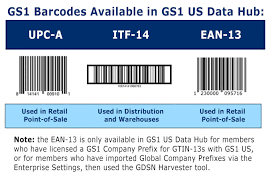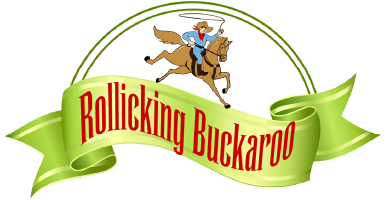
What You Need to Know About GS1 US and UPC Codes
Share
If you’re bringing a product to market—whether it’s a specialty jam, seasoning blend, or any packaged good—you’ll quickly run into the world of UPC codes. And at the center of that world is GS1 US.
For a brand like Rollicking Buckaroo, understanding and using GS1 US UPC codes is not just helpful — it’s essential for reaching larger markets, working with distributors, and appearing on retail shelves nationwide.
Here’s a simple breakdown of what GS1 US is, why UPC codes matter, and how they help brands grow.
What is GS1 US?
GS1 US is the official organization that issues UPC (Universal Product Code) prefixes in the United States.
They are part of the larger GS1 Global system, which sets international standards for product identification, barcoding, and supply chain tracking.
In short:
GS1 US is the only legitimate source to get UPC codes that are universally recognized by major retailers, wholesalers, and online marketplaces.
What is a UPC Code?
A UPC code (Universal Product Code) is the barcode you see on just about every product.
It consists of:
A series of black and white bars
A 12-digit number below the bars
The UPC does two important things:
Identifies your specific product in store systems
Links to your brand and your company as the registered owner of the code
Without a valid UPC code, stores and distributors cannot easily sell, track, or reorder your product.
Why GS1 US Matters for Brands Like Rollicking Buckaroo
Authenticity and Retail Acceptance
Major retailers—like grocery stores, big box chains, and even online marketplaces like Amazon—require GS1-issued UPC codes.
Many won't accept products with "third-party" or non-verified barcodes bought from unofficial sellers.
When you buy from GS1 US, your brand name is officially tied to the UPC in the global database.
(Example: When a store scans your barcode, it connects to Rollicking Buckaroo, not a random third party.)
Professionalism and Trust
Having real GS1 US UPC codes shows distributors, buyers, and partners that you’re serious about your brand.
It signals that you meet industry standards and are ready for larger-scale business.
Ease of Inventory and Reordering
With your products correctly registered, it’s easier for stores to manage inventory, reorder, and track sales.
It also prevents errors—like mixing up your Pepper Jam with another vendor's product.
Scalability
Starting with GS1 means you’re set up to grow.
If Rollicking Buckaroo expands into new flavors, gift packs, or subscription boxes, you can assign new UPCs from your brand’s GS1 prefix quickly and correctly.
How to Get a UPC Code from GS1 US
Apply for a GS1 Company Prefix
This prefix identifies your business and becomes the foundation for all your product codes.
Assign Product Numbers
You assign unique numbers to each product variation (for example, one UPC for Medium Pepper Jam, another for Hot Pepper Jam).
Create the Barcode
GS1 provides tools or certified vendors to help you generate the barcode graphics.
Label Your Products
Place the barcode on your packaging following GS1 guidelines so it scans correctly.
What Does It Cost?
GS1 US charges an initial fee to license your Company Prefix (based on how many products you plan to sell) and a small annual renewal fee.
While some businesses try to find "cheap UPC codes" online, it's risky. Most retailers eventually require proof that your codes are legitimate—and only GS1 can provide that certification.
In short:
Investing in real GS1 US UPC codes is smarter, safer, and more professional for any serious brand.
Conclusion: Protect Your Brand and Plan for Growth
For a brand like Rollicking Buckaroo, using authentic GS1 US UPC codes is a must.
It builds credibility, opens doors to bigger markets, and sets the stage for smooth scaling as we continue to grow.
If you’re thinking about launching a new product—or expanding into wholesale or foodservice—it’s worth making sure your barcodes are ready for prime time!
